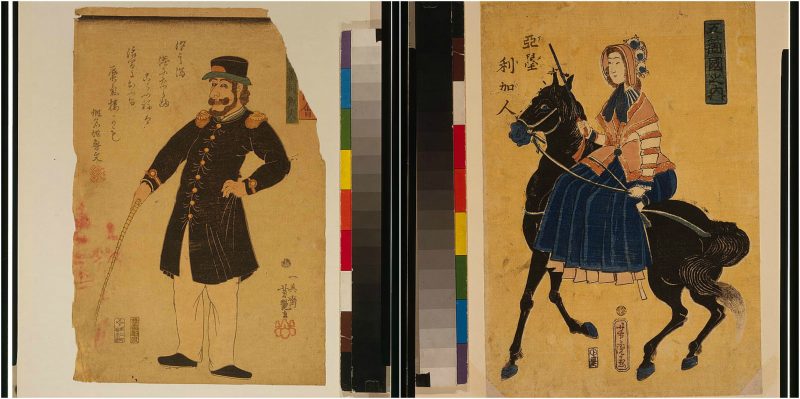Ukiyo-e is a Japanese genre of art that flourished from the 17th through 19th centuries. Its artists produced woodblock prints and paintings of such subjects as female beauties, kabuki actors, sumo wrestlers, scenes from history, folktales, travel scenes, landscapes, and flora and fauna. The name Ukiyo-e translates as “picture of the floating world.”
During the 16th and 17th centuries, Portugal, Spain, and Holland had a regular trade connection with Japan, but with some restrictions by the Japnese ruling body. Since 1639, they limited trade with western countries even more. They did this mainly because Europeans were persistent in their attempts to convert the Japanese people to Christianity, and because of their unfair trading practices. For nearly 200 hundred years, trade permission was given only to a few Dutch and Chinese ships.
In 1853, American Commodore Matthew Perry arrived in Edo. This visit led to the Convention of Kanagawa in 1854, which opened Japan to the outside world after over two centuries of seclusion. An American consulate also opened in Japan. After this long period of isolation, art forms such as Ukiyo-e were central to formulating the West’s perception of Japanese art. Ukiyo-e woodblock prints had a particularly strong influence on early Impressionists such as Degas, Manet, and Monet, as well as Post-Impressionists such as Van Gogh and Art Nouveau artists such as Toulouse-Lautrec. At the same time, the traditional form of Ukiyo-e was influenced by the western culture and implemented many motifs from the western world.
Many artists started to document the rapid modernization of Japan. Their prints became more industrial, and in some cases depicting European tourists and their “strange” habits.
The following pictures are part of a woodblock print collection (obtained from the Library of Congress) called “Yokohama-e” (literally “Yokohama pictures”). The art depicts North American citizens who visited Yokohama during the 1860s and 1870s. The prints shown here are from various artists, including some of the most prolific in this form of Ukiyo-e, Utagawa Yoshitora and Utagawa Yoshikazu.
American family out for a stroll (1860)
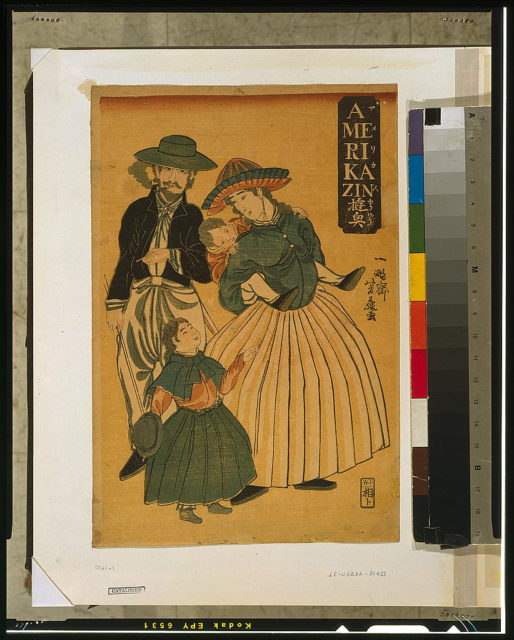
Mother and child with a Japanese manservant leaving for a walk (1860)
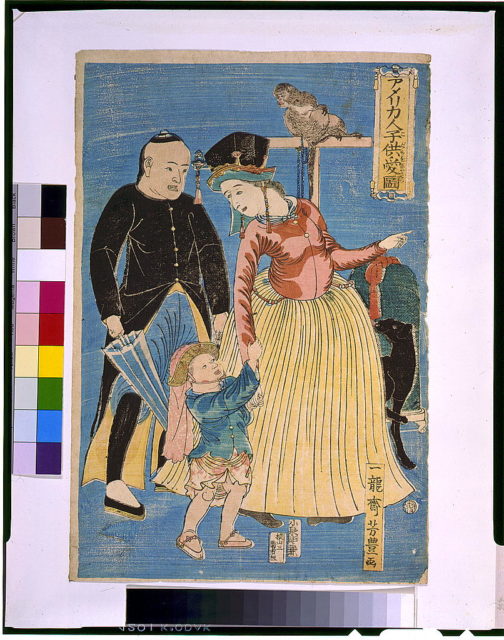
Standing woman and man, who is smoking a cigarette (1861)
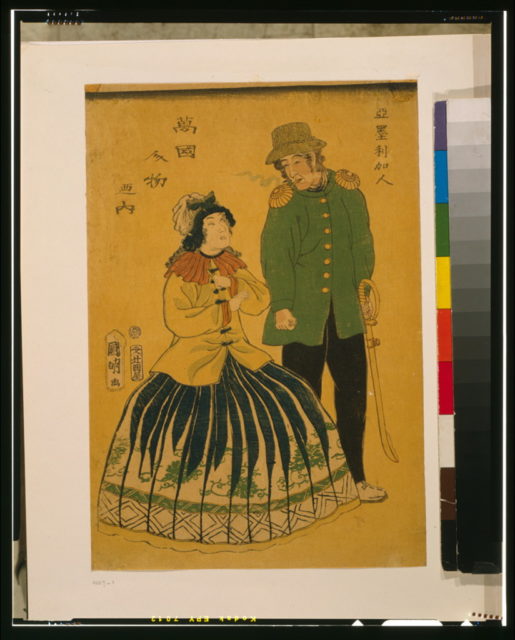
American man riding in a carriage along the shoreline in Yokohama, Japan (1861)
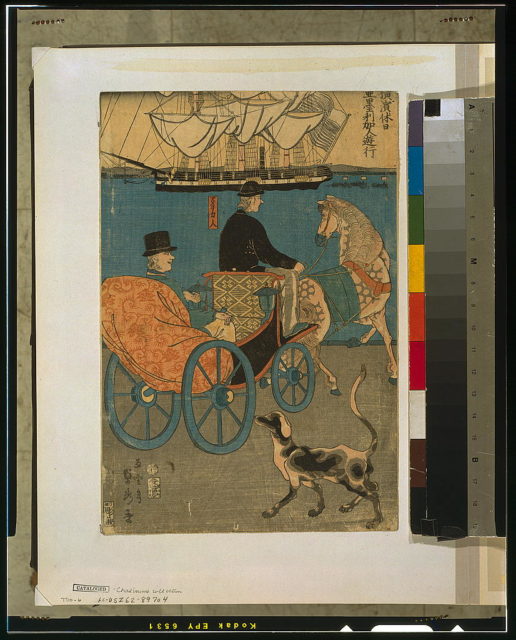
Two American men baking bread (1861)
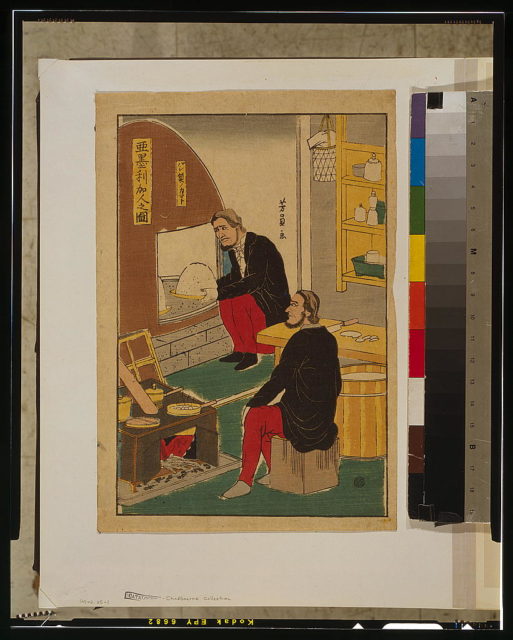
A man and a woman visiting the shore of Yokohama, Japan (1861)
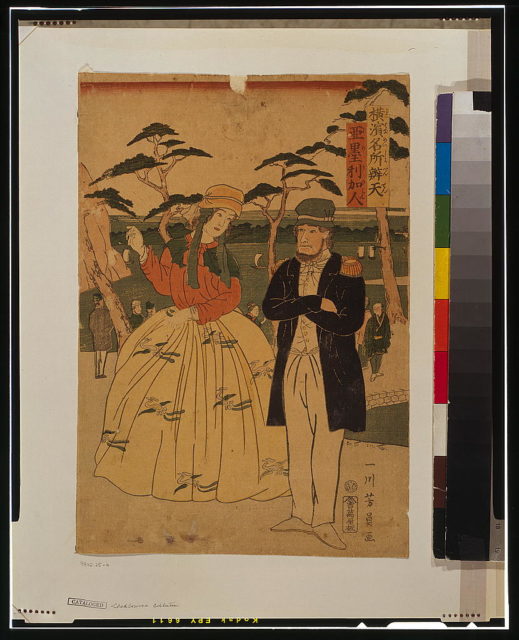
Initially, Kanagawa was planned as the main port for foreign trade and as the principal residence for foreign people coming to Japan. However, Kanagawa was located on the Tōkaidō, the main east-west road. The Japanese didn’t want the foreigners to access this route and decided that the small village of Yokohama was more suitable as the main trading port. The port of Yokohama opened in 1859. Through this port, the western visitors brought western fashion, photography, ice cream, rugby, and cricket to Japan.
An American couple (1861)
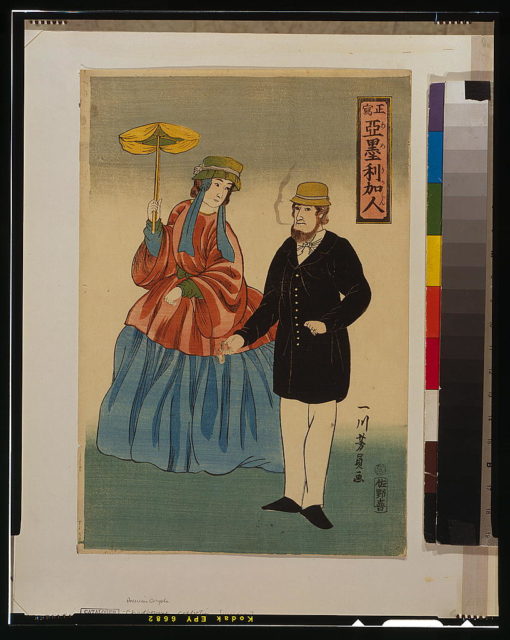
An American family (the husband stands nearby while his wife breastfeeds an infant) (1861)
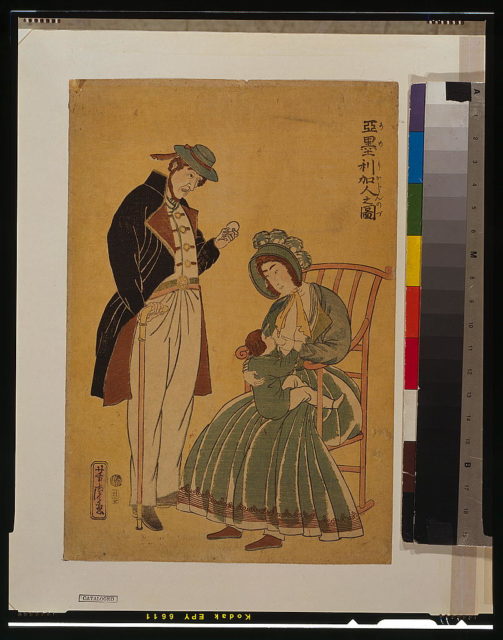
American man holding a glass and a Japanese courtesan holding a bottle (1861)
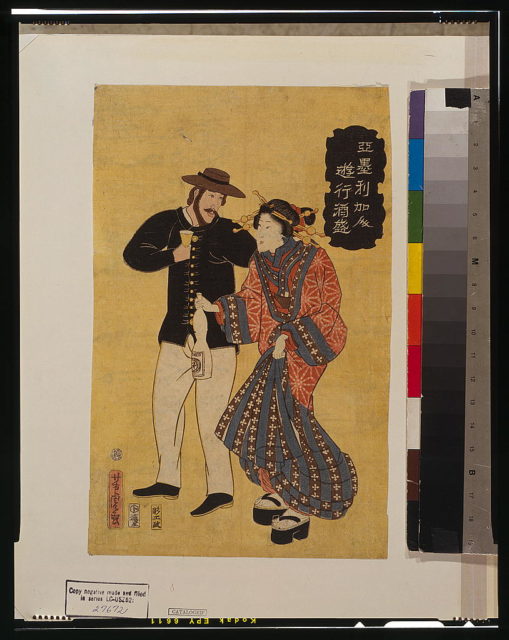
An American couple conversing; includes a text of Japanese translation (1863)
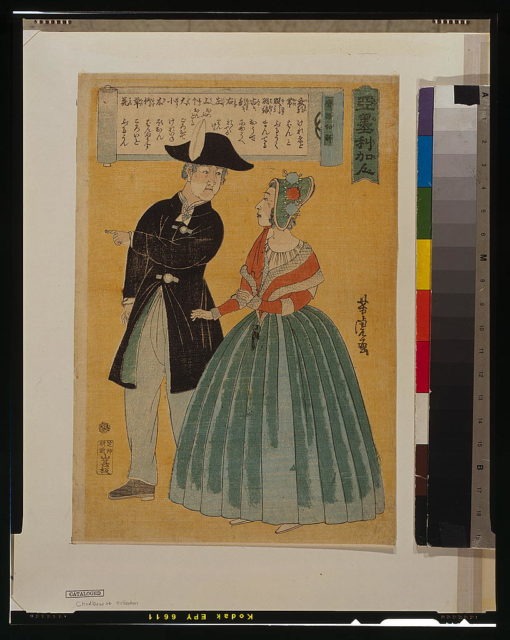
A woman riding sidesaddle (1861)
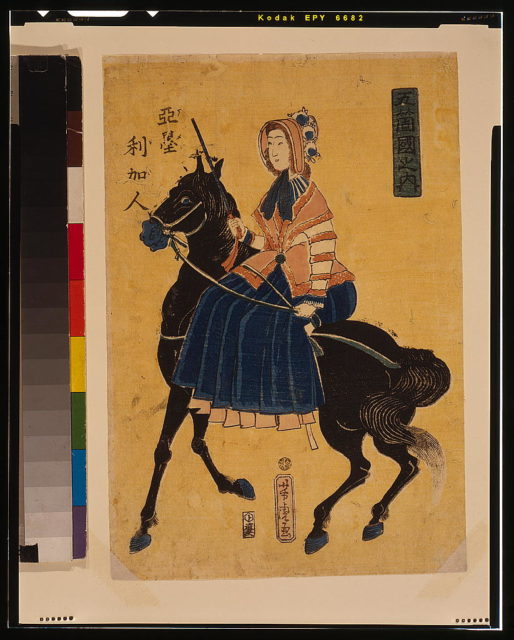
Aman, standing, facing left, holding a cane (1861)
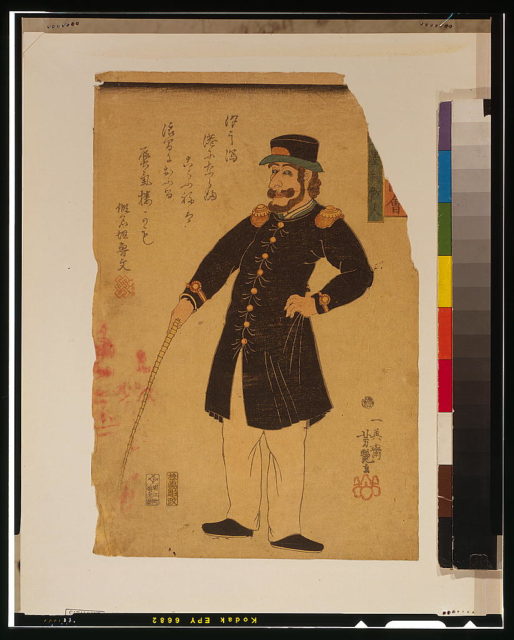
American couple looking at something in the distance (1860)
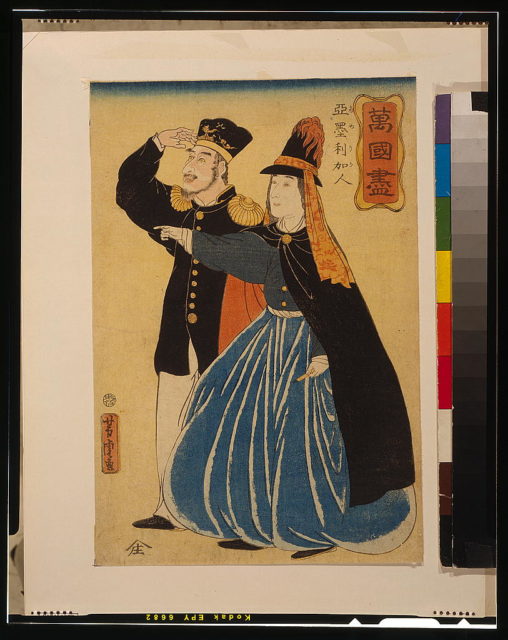
The Yokohama-e prints are a significant visual document. They show they show us how the Japanese looked upon the North American visitors that arrived on their island. The pictures depict a clash of two cultures: the traditions of Japan and the new influence of the West. Ukiyo-e is perfect for documenting this moment in history because of its journalistic style of illustration.
